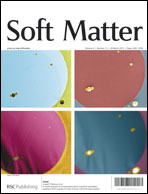Recent advances in contact mechanics have formalized approaches to distinguish between poroelastic and viscoelastic deformation regimes via load relaxation experiments, and to simultaneously extract the mechanical and transport properties of gels at the macroscale. As poroelastic relaxation times scale quadratically with contact diameter, contact radii and depths on the mm scale can require hours for a single load relaxation experiment to complete. For degradable materials such as biodegradable hydrogels and soft biological tissues, it is necessary to minimize the required experimental time. Here, we investigated the applicability of these methods at smaller (μm) length scales to shorten relaxation times. We conducted load relaxation experiments on hydrated polyacrylamide (PAAm) gels at the microscale via atomic force microscopy (AFM)-enabled indentation, as well as at the macroscale via instrumented indentation. We confirmed the approach as a reliable means to distinguish between viscoelastic and poroelastic relaxation regimes at the microscale: shear modulus G, drained Poisson's ratio νs, diffusivity D, and intrinsic permeability κ of the gels agreed well at the micro- and macroscale levels. Importantly, these properties were accessed accurately within seconds at the microscale, rather than within hours at the macroscale. Our results demonstrate the promise of contact-based load relaxation analysis toward rapid, robust characterization of mechanical and transport properties for poroelastic gels and tissues.

You have access to this article
 Please wait while we load your content...
Something went wrong. Try again?
Please wait while we load your content...
Something went wrong. Try again?


 Please wait while we load your content...
Please wait while we load your content...